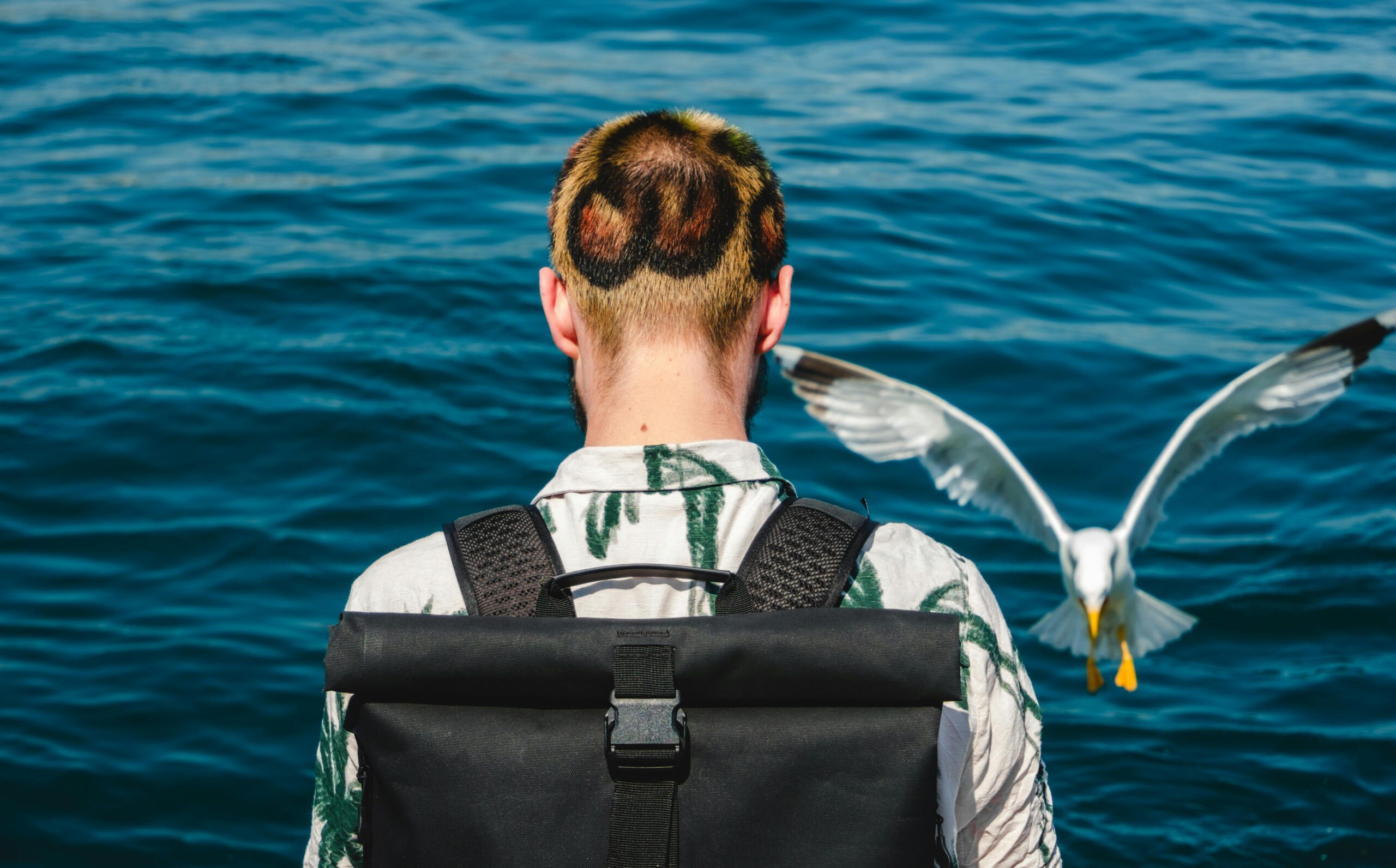When venturing into the great outdoors, your hiking backpack serves as your most trusted companion, carrying everything essential for your adventure. Whether you’re planning a day hike or an extended mountaineering expedition, choosing the right hiking backpack can make the difference between an unforgettable journey and a painful ordeal.
Essential Features Every Quality Hiking Backpack Must Have
A professional hiking backpack incorporates several critical design elements that distinguish it from ordinary bags. The suspension system forms the backbone of any quality outdoor pack, distributing weight evenly across your torso and hips. This engineering marvel ensures that even heavy loads feel manageable during long treks through challenging terrain.
Modern hiking backpack designs prioritize comfort through advanced padding systems. The shoulder straps feature ergonomic curves that follow your body’s natural contours, while breathable mesh backing prevents uncomfortable moisture buildup. Premium models include adjustable sternum straps and load lifters that fine-tune the pack’s fit to your specific body dimensions.
Durability remains paramount when selecting a hiking backpack for serious outdoor pursuits. High-quality materials like ripstop nylon and reinforced seams withstand the rigors of rocky trails and dense vegetation. Water-resistant coatings protect your gear from unexpected weather, while strategically placed compression straps maintain load stability during dynamic movement.
Top Professional Hiking Backpack Brands Dominating 2025
Osprey: The Innovation Leader
Osprey has revolutionized the hiking backpack industry since 1974, consistently delivering cutting-edge designs that enhance outdoor experiences. Their anti-gravity suspension system feels like magic, making heavy loads seem to float on your back. The brand’s lifetime guarantee demonstrates unwavering confidence in their craftsmanship.
Gregory: American Heritage Excellence
Since 1977, Gregory has perfected the art of creating hiking backpack solutions for serious adventurers. Their FreeFloat suspension technology adapts to your movement, maintaining stability whether you’re scrambling over boulders or navigating narrow ridgelines. Professional guides worldwide trust Gregory for their most demanding expeditions.
Deuter: German Engineering Precision
German engineering excellence defines every Deuter hiking backpack, combining meticulous attention to detail with innovative materials. Their Aircontact back panel system maximizes ventilation while maintaining load transfer efficiency. Decades of alpine testing have refined their designs to perfection.
Choosing the Perfect Hiking Backpack Capacity for Your Adventures
Understanding capacity requirements ensures your hiking backpack meets your specific needs without unnecessary bulk. Day hikers typically require 20-35 liter packs that accommodate essentials like water, snacks, and emergency gear. These compact designs maintain agility while providing adequate storage for shorter excursions.
Multi-day adventures demand larger hiking backpack volumes ranging from 50-70 liters. These packs accommodate sleeping systems, cooking equipment, and extended food supplies. Advanced organizational features help maintain order despite the increased gear load.
Technical mountaineering expeditions may require 70+ liter packs that handle specialized equipment. Ice axes, crampons, and technical climbing gear demand robust attachment systems and reinforced construction that elite hiking backpack designs provide.
Revolutionary Materials and Technologies in Modern Hiking Backpacks
Contemporary hiking backpack construction utilizes space-age materials that dramatically improve performance. Ultra-high molecular weight polyethylene fibers create incredibly strong, lightweight fabrics that resist abrasion and tearing. These advanced materials reduce pack weight without compromising durability.
Innovative suspension technologies continue evolving, with brands developing proprietary systems that enhance comfort. Dynamic load transfer mechanisms adjust automatically to your gait, while advanced foam formulations provide superior cushioning without adding bulk to your hiking backpack.
Smart features increasingly appear in premium models, including integrated hydration systems, removable tool organizers, and modular expansion capabilities. These thoughtful additions enhance functionality without complicating the fundamental hiking backpack design.
Professional Fitting Techniques for Optimal Hiking Backpack Performance
Proper fitting transforms an ordinary hiking backpack into a precision instrument that enhances your outdoor performance. Begin by measuring your torso length, the distance between your C7 vertebra and iliac crest. This measurement determines the appropriate pack size regardless of your height.
Load the hiking backpack with realistic weight before testing. Adjust the shoulder straps first, ensuring they wrap around your shoulders without gaps. The hip belt should sit comfortably on your hip bones, carrying 80% of the pack’s weight. Fine-tune load lifters to achieve optimal weight distribution.
Test your loaded hiking backpack by walking around the store or your home. Pay attention to pressure points, balance, and overall comfort. A properly fitted pack should feel stable and comfortable, allowing natural movement without restricting your range of motion.
Maintenance and Care for Long-lasting Hiking Backpack Performance
Regular maintenance extends your hiking backpack lifespan while maintaining peak performance. After each trip, empty all compartments and inspect for damage. Clean the pack using mild soap and lukewarm water, paying special attention to high-wear areas like the bottom panel and shoulder straps.
Proper storage protects your hiking backpack during off-seasons. Store packs in cool, dry locations away from direct sunlight. Avoid compressing the pack for extended periods, as this can damage the suspension system and reduce the pack’s structural integrity.
Address minor repairs immediately to prevent major problems. Small tears can be patched using repair tape, while loose stitching should be reinforced promptly. Many manufacturers offer repair services for damaged hiking backpack components.
Advanced Hiking Backpack Features for Specialized Activities
Specific outdoor activities benefit from specialized hiking backpack features designed for those pursuits. Photography enthusiasts need dedicated camera compartments with protective padding and quick-access panels. These specialized sections protect expensive equipment while maintaining easy accessibility for capturing perfect shots.
Winter mountaineering demands hiking backpack designs that accommodate technical gear. Ice axe loops, ski attachments, and rope carry systems become essential features. Reinforced construction handles the additional stress of alpine environments and technical equipment.
Ultra-light backpacking focuses on minimizing hiking backpack weight through strategic feature reduction. Frameless designs, lightweight materials, and simplified suspension systems appeal to gram-counting enthusiasts who prioritize speed and efficiency over comfort features.
| Hiking Backpack Type | Capacity Range | Best For | Key Features |
|---|---|---|---|
| Day Hiking | 20-35L | Single day trips | Lightweight, hydration compatible |
| Multi-day Trekking | 50-70L | 2-7 day adventures | Full suspension, multiple compartments |
| Expedition | 70L+ | Extended expeditions | Maximum durability, specialized attachments |
Environmental Considerations and Sustainable Hiking Backpack Choices
Eco-conscious adventurers increasingly seek hiking backpack options that minimize environmental impact. Several manufacturers now utilize recycled materials in their construction, transforming plastic waste into high-performance fabrics. These sustainable practices reduce environmental footprint without compromising quality or durability.
Responsible manufacturing processes also characterize leading hiking backpack brands. Fair labor practices, reduced water consumption, and renewable energy usage demonstrate commitment to environmental stewardship. Supporting these companies encourages industry-wide adoption of sustainable practices.
The repair and refurbishment programs offered by premium hiking backpack manufacturers extend product lifecycles significantly. Rather than discarding worn packs, these services restore functionality while reducing waste. This circular economy approach benefits both consumers and the environment.
Expert Tips for Hiking Backpack Selection Success
Professional guides and experienced adventurers offer valuable insights for hiking backpack selection. Try multiple brands and models, as different manufacturers use varying torso measurements and design philosophies. What works perfectly for one person may feel uncomfortable for another with identical measurements.
Consider your typical hiking style when evaluating hiking backpack options. Fast-and-light enthusiasts prioritize weight savings over maximum comfort, while those carrying heavy loads need robust suspension systems. Match the pack’s design philosophy to your adventure style for optimal satisfaction.
Don’t overlook the importance of warranty coverage when investing in a quality hiking backpack. Premium manufacturers stand behind their products with comprehensive warranties that protect your investment. These guarantees often include repair or replacement coverage for manufacturing defects.
Frequently Asked Questions About Hiking Backpacks
What size hiking backpack do I need for a weekend trip? For weekend adventures, a 40-50 liter hiking backpack typically provides adequate space for clothing, food, and camping gear. This capacity accommodates two days of supplies while maintaining reasonable weight and bulk for comfortable hiking.
How much should I expect to spend on a quality hiking backpack? Professional-grade hiking backpack models range from $150-400, with premium expedition packs exceeding $500. Investing in quality construction and advanced features pays dividends through years of reliable service and enhanced outdoor experiences.
Can I use a hiking backpack for international travel? Many modern hiking backpack designs incorporate travel-friendly features like hideaway suspension systems and front-panel access. These hybrid designs excel at both outdoor adventures and international travel, offering versatility for active travelers.
The world of outdoor adventures awaits, and your perfect hiking backpack companion is ready to join you on countless memorable journeys. Whether scaling peaks, traversing valleys, or exploring hidden trails, the right pack transforms challenging terrain into achievable goals. Choose wisely, pack carefully, and let your adventures begin with confidence in your gear and excitement for the trails ahead.

